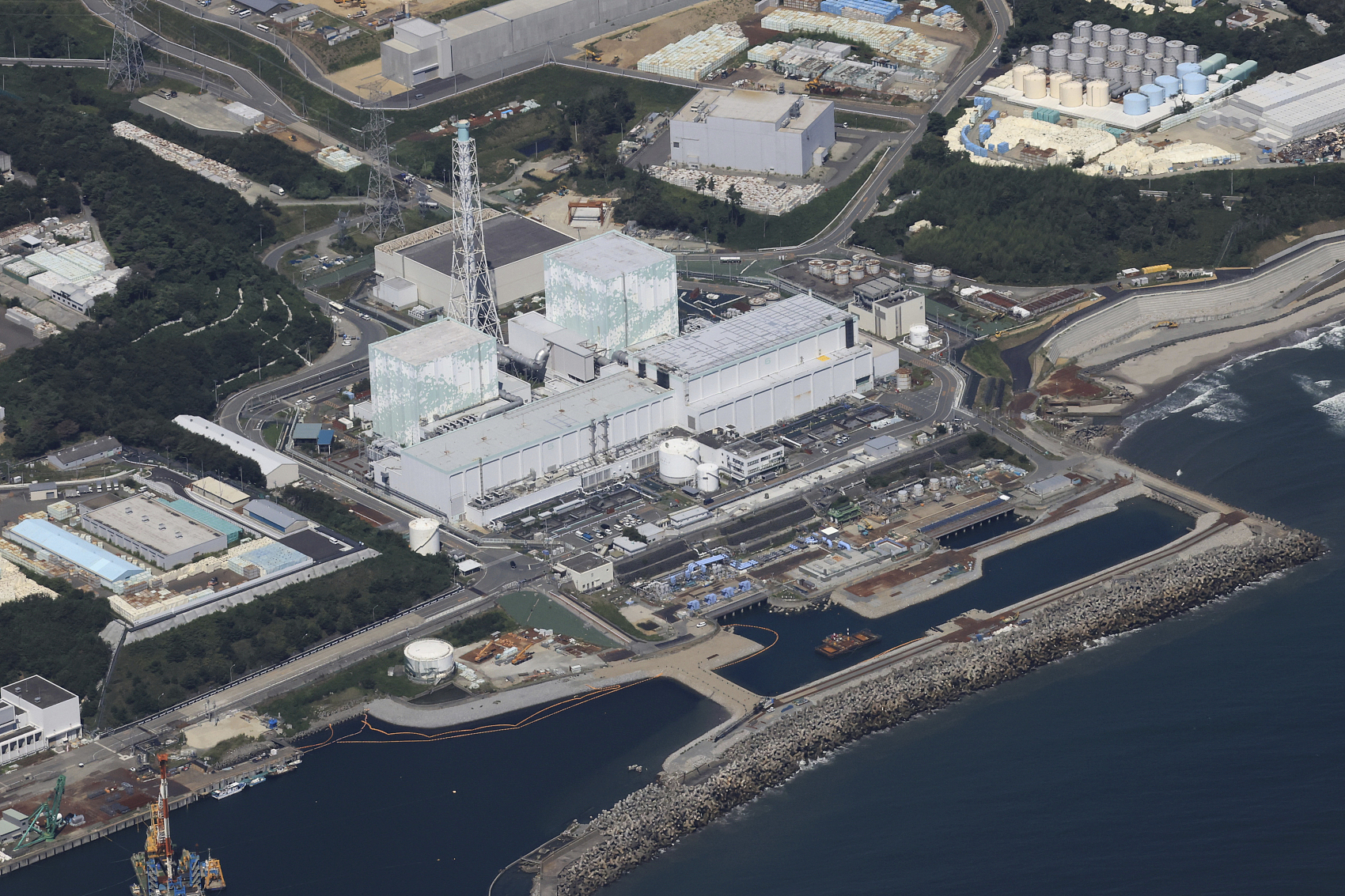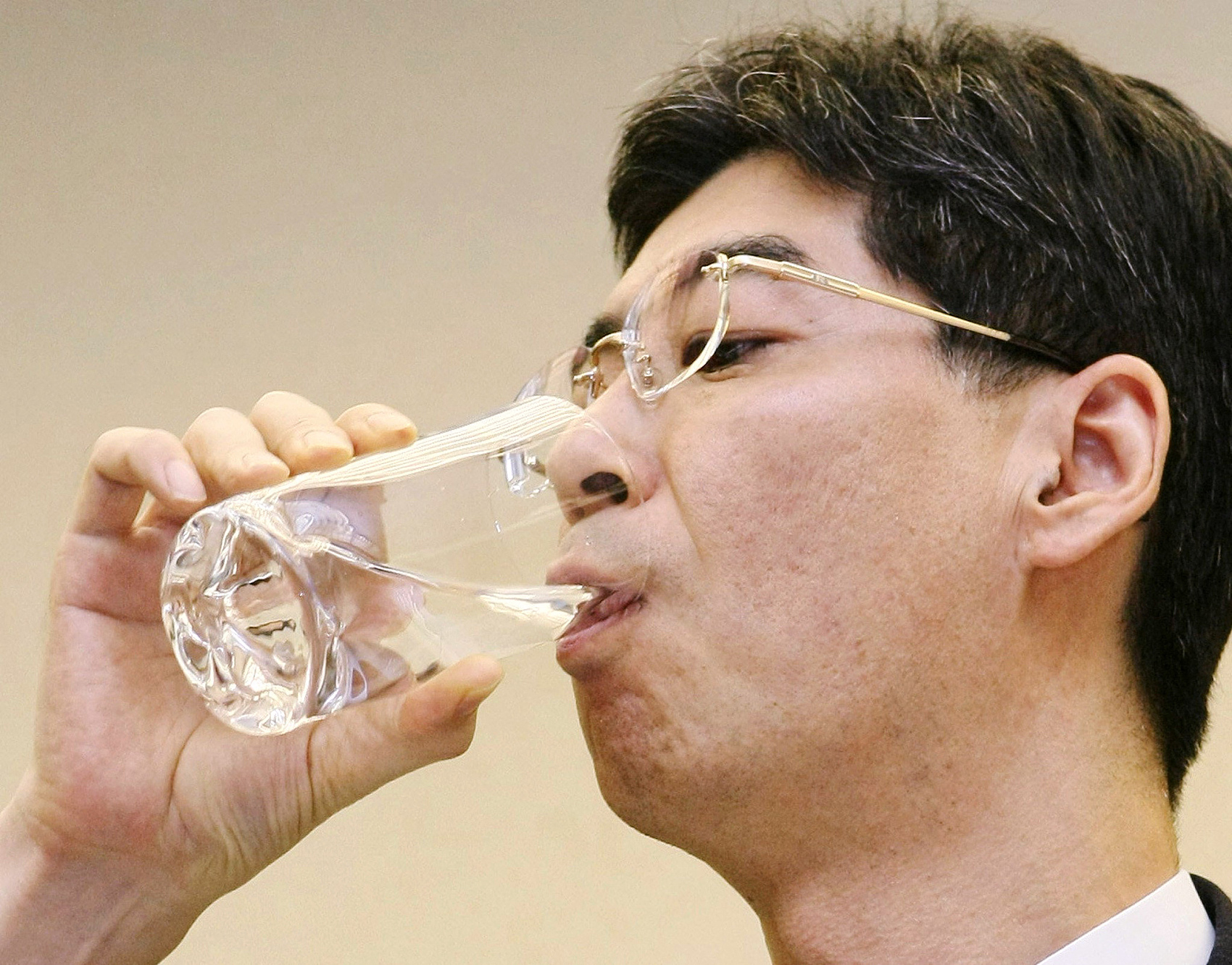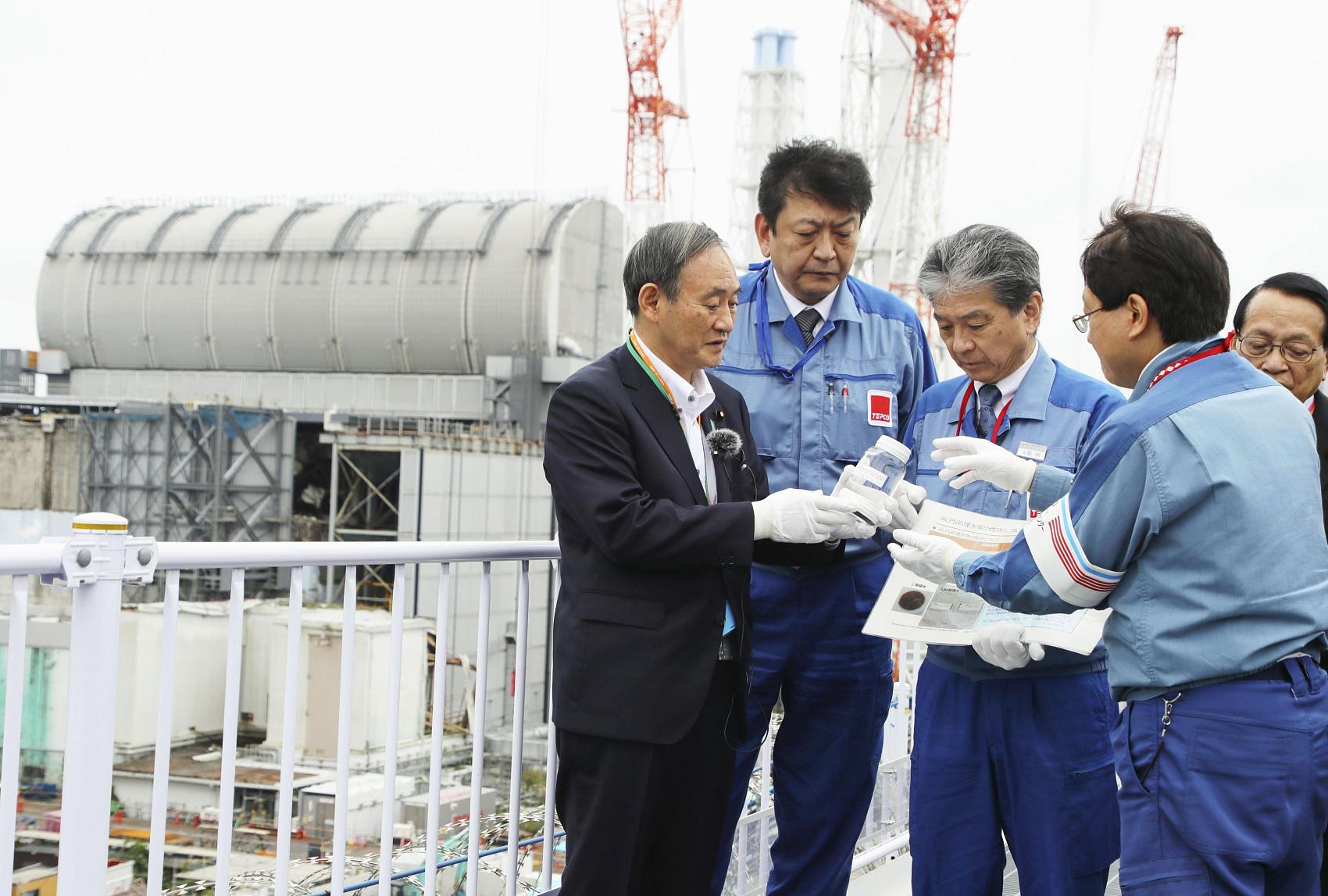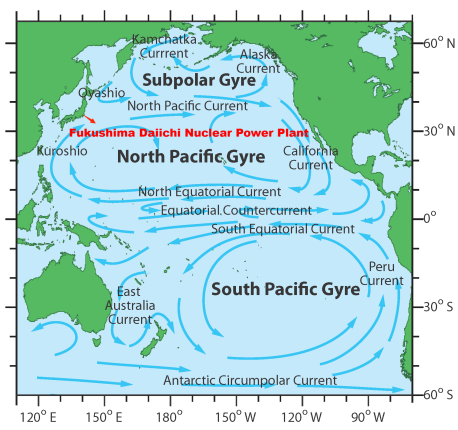Japan has begun dumping over a million metric tons of nuclear-contaminated water from the crippled Fukushima Daiichi nuclear power plant into the Pacific Ocean since August 24, a process that takes at least 30 years to complete.

Fukushima Daiichi nuclear power plant. (Source: Xinhua)
Although the Japanese government has insisted that the polluted water will be consistent with international standards and four top Japanese government members including Prime Minister Fumio Kishida ate Fukushima seafood as a gesture of safety, many research institutes stressed that the polluted water contains more than 60 kinds of radionuclides especially dangerous isotopes such as tritium, ruthenium, cobalt, strontium and plutonium that are difficult to remove.
Professor Tilman Ruff, co-president of the International Physicians for the Prevention of Nuclear War, told GDToday that these trans-boundary and trans-generational exposures that are without benefit to people could readily be avoided through alternatives but the government of Japan and Tokyo Electric Power Company Holdings (TEPCO) have not properly considered.
So why doesn’t Japan utilize the so-called “safe and drinkable treated-water” as the country is in dire need of fresh water? Is the nuclear-contaminated water from Fukushima really safe?
“No harm if we drink”?
“I have heard that we will have no harm if we drink (the treated water)”, said Taro Aso, the then Japanese Deputy Prime Minister, on April 13, 2021 after announcing the disposal method of Fukushima radioactive water.
In 2011, Japan's Parliamentary Secretary for the Cabinet Office Yasuhiro Sonoda drank a glass of decontaminated water collected from Fukushima Daiichi nuclear plant as reporters repeatedly questioned the safety of the water. The official “appeared nervous and his hands shook” when he put down the glass, according to BBC.

Yasuhiro Sonoda. (Source: VCG)
The act has won Yasuhiro Sonoda political capital. He was promoted as Senior Vice Minister of Environment in 2012..
In contrast to Sonoda’s bold move to prove the safety of Fukushima water, the former Japanese Prime Minister Yoshihide Suga took a cautious approach instead during the visit to the Fukushima Daiichi Nuclear Power Station on September 26, 2020. Seeing the purified nuclear water, Suga asked the staff of TEPCO whether the water is drinkable. Though the staff confirmed that the purified water is drinkable after dilution, the then Prime Minister did not drink after a long consultation.

Former Japanese Prime Minister was holding a bottle of nuclear treated water but did not dare to take a sip (Source: VCG)
Unexpectedly, at his prime time in politics, Yasuhiro Sonoda suddenly left his post in 2015 and a similar move occurred in 2020 when he resigned from the representative director of ACD e-commerce company.
His whereabouts during the years except the two announcements remained as a mystery and doubts about his death are fueling.
Though Sonada said that he is alive through a phone interview on September 3 with Kyodo News Agency, the public could not dispel concerns regarding the harmful effects of Fukushima radioactive water because a man who has disappeared for over 5 years didn’t offer any details of his health after the 2011 performance, and the most importantly, he did not show up.
According to Professor Tilman Ruff, the filtration process Advanced Liquid Processing System (also known as ALPS) by Japan is incapable of eliminating either tritium or carbon-14.
The Japanese Ministry of Economy, Trade and Industry alleged that the polluted water has little impact on human health and the environment and that tritium is harmless as water circulating from human body to nature.
Tritium, the radioactive substance emitted in large amounts of nuclear water, is highly underrated as an environmental toxin which can have significant biological consequences including DNA damage, impaired physiology and development, reduced fertility and longevity, and increased risk of diseases including cancer in a variety of species, warned Ruff.
Ruff added that Carbon-14, a radionuclide almost invisible in any official statement of Japanese government, can concentrated up 50,000 times higher than in ocean water and can bio-accumulate and are recycled by living things to cause radiation exposure. Greenpeace also noted that carbon-14 contained in the Fukushima wastewater leads to cell death and genetic mutations across generations.
Environmental radiation levels above safety limits detected
Hours before Japan released the contaminated water into the ocean, high environmental radiation level of 1.7 microsieverts per hour (µSv/h) was recorded at a distance of 1.5 kilometers from the nuclear power plant. However, the global average of naturally occurring background radiation of 0.17-0.39 µSv/h, a range given by the World Nuclear Association.
A report published in the Journal Physics in Nuclear Medicine by professors from University of California and University of Wisconsin showed that for individual members of the public, radiation levels in unrestricted areas should be below 0.5 µSv/hr, assuming continuous occupation of the area. Ruff also emphasized that a radiation level of 1.7 µSv/h is not risk free but is associated with some incremental long-term health risks.
Obviously, the environmental radiation levels near Fukushima are above safety limits. As the risks of relevant products are clear, the worries and losses of the local industries are gathering and mounting.
Yasuo Yoshida, a 56-year-old fisherman in Iwaki, located around 30 kilometers south of the Fukushima Daiichi plant, said he was worried about the price decline of fish shipped from Fukushima Prefecture and nearby areas.
Yasuhiro Yamazaki, president of wholesaler Yamaharu Co., which exports sea urchins and young yellowtail, said that the loss of the business amounted to several million yen.
Travel sectors are also hit by the radioactive water dumping. Several travel agencies have reported the cancellation of Japan-bound trips because customers see Japan’s contaminated-water discharge is “irresponsible” and “unacceptable”, according to Global Times.
A question hangs over the whole industries amid Japan’s reckless discharge. “The government and TEPCO have not given us any concrete plans in the end. Will they really compensate us?” Yoshida asked.
“Our opposition to the discharge has not changed a bit,” stated the National Federation of Fisheries Cooperative Associations.
According to the latest news, the Japanese government promises to give support to the aquaculture through investing 100.7 billion yen. However, the nuclear pollution will continue, if the reactor has not been taken from the power plant.
The Pacific Ocean as a trash bin for Japan
According to the calculation of a German Marine Scientific Research Institute, radioactive materials will contaminate most of the Pacific Ocean within 57 days from the date of discharge, and spread to the United States and Canada three years later.

Gyres in the Pacific Ocean (Source: OceanTracks)
“It’s a trans-boundary and trans-generational event,” says Robert Richmond, director of the Kewalo Marine Laboratory at the University of Hawaii, and a scientific adviser on the discharge plan to the Pacific Islands Forum. “Anything released into the ocean off of Fukushima is not going to stay in one place.”
Ocean currents could carry radioactive isotopes contained in the wastewater and travel across the Pacific Ocean. A study from Yale University has found that Pacific bluefin tuna carrying Fukushima-derived radionuclides reached the San Diego coast within six months since the 2011 Fukushima disaster.
Marine animals that migrate great distances could spread the radionuclides, too. Phytoplankton, free-floating organisms that are at the bottom of the food chain for all marine life, can transfer the radioactive isotopes from Fukushima water into “a variety of invertebrates, fish, marine mammals and humans”, said Richmond.
Moreover, the organically bound form of radioactive isotopes like tritium could accumulate up the food chain, said Shigeyoshi Otosaka, an oceanographer and marine chemist at the Atmospheric and Ocean Research Institute of the University of Tokyo. And it takes 10 half-lives for the marine ecosystem to get rid of radioactive effects. Strontium, a radioactive pollutant in Fukushima water, has a half life of 29 years, which means its effects could last as long as 290 years.
On August 28, Japan opened Fukushima plant to media after a week of discharge. Whether the nuclear contaminated-water is safe or not, the fact that correspondents still wore protective suits on site tells.
Co-presented by GDToday and the School of Journalism and Communication, Jinan University
Reporter | Sherry Lyn (intern), Steven Yuen
Video editor | Zeng Qianzhi (intern)
Editor | Wing Zhang, Jerry

















